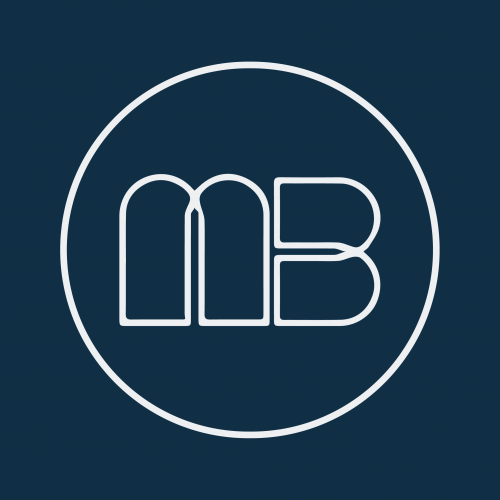How companies can create inclusive workplaces for the LGBTQ+ community.
In support of Pride month, we’re speaking to business leaders on what more businesses can do to help bring greater inclusivity and safety to the workplace for LGBTQ+ people.
In this article, Emma L’Amour (Gunn), CEO of Re-Balance, explains what companies can do to nurture and encourage the next generation of LGBTQIA+ employees and leaders.
Hello, my name is Emma and I’m a queer CEO.

Emma L’amour (Gunn), CEO of Re-Balance
Every day can feel like a coming out day. It doesn’t get any easier each time I come out. I’ve just become better at spotting what type of reaction I might get. This could be anything from an awkward silence to a surprised raised pitch in their voice. There’s usually an ‘oh’ somewhere.
Sometimes I wonder if I need to identify myself in a certain way in order to make others feel comfortable around me.
But coming out and being out matters.
Currently there are just 4 openly LGBTQIA+* CEOs of the Fortune 500 and only 26 of the 5,670 (0.5%) board seats in the Fortune 500 are held by openly LGBTQIA+ directors [1].
The most notable are Tim Cook, Apple and Beth Ford, Land O’Lakes, the first openly LGBTQIA+ woman to lead a Fortune 500 company.
In spite of some legal protections, LGBTQIA+ employees often face hostility in the workplace and fear that this could affect their chances for promotion or how they might be treated as leaders.
- One out of five (21%) LGBT people in the European Union experienced workplace discrimination in 2019. However, transgender employees specifically experienced much higher levels of discrimination (36%).
- Nearly half (45.5%) of LGBT workers in the United States have faced some form of discrimination at work at some point in their careers, such as harassment, being fired, or being denied employment based on their sexual orientation or gender identity[2].
- LGBTQIA+ Black people and people of colour were more likely (35.6%) to report experiencing verbal harassment at work because of their sexual orientation or gender identity compared to white LGBT employees (25.9%)[3].
People who are LGBTQIA+ often choose between self preservation and promotion, especially when senior roles come with the expectation that their personal and professional lives will overlap.
When LGBTQIA+ people are confronted with criticism over their competency just because of their sexuality or they are constantly forced to come out in the workplace and publicly, these barriers can become overwhelming and prevent them from achieving senior leader status.
In addition, there are still 60 countries in the world that criminalise homosexuality, and it is estimated that 83% of people who identify as LGBTQIA+ hide their orientation from all or most people in their lives [4].
What can companies do to enable LGBTQIA+ employees to feel like they belong in their workplace and empower them to break the glass ceiling and be their authentic selves in the boardroom?
During Pride season this summer, several organisations will be changing their logos to rainbow colours and sharing messages such as ‘love is love’ and ‘happy pride’.
The intention and words of businesses indicate a commitment to LGBTQIA+ individuals, but those alone are not enough.
Organisations should go beyond the celebrations and ensure that a safe, nurturing environment is created that respects, supports, and promotes diversity.
LGBTQIA+ employees need to feel comfortable bringing their true selves to work every day.
Here are some steps companies can take to start their journey toward building an inclusive culture that nurtures a safe and supportive environment for LGBTQIA+ employees:
- Check your data. Business leaders can use measurement and tracking data about LGBTQIA+ employees (like measurement and tracking data for gender and race) to identify challenges to inclusion. Organisations can use measurement data to establish a benchmark and a starting point.
- Be brave, not perfect. Many organisations do nothing in the fear of getting it wrong. Doing something is better than doing nothing. Employers should make sure all employees, especially senior leaders and managers, are educated about the importance of trans-inclusivity; are able to identify and eliminate any homophobic stereotypes; and provide guidance about pronouns, facilities, and harmful stereotyping.
- Listen to the community. Establishing a formal communication channel between LGBTQIA+ employees and senior leadership teams will facilitate collaboration in shaping the organisational culture. You can easily accomplish this by encouraging employees to build their own LGBTQIA+ networks. Ensure you have visible sponsorship and support from both senior leaders and inclusion champions across your organisation. It’s not the role of the LGBTQIA+ network to do all the work for you.
- Mind your language. Language really matters especially when it comes to communication and policies. Make sure to use gender inclusive language like ‘hi folks, team, everybody’ instead of ‘hi guys, ladies’ when addressing a group of people. Specifically include policies promoting gender and trans inclusiveness, such as pensions, family leave, health insurance, and relocation allowances. Ensure your policies are up-to-date and specifically mention LGBTQIA+ people.
- Normalise pronouns. By respecting people’s pronouns, we validate their identity and sense of belonging. Including pronouns in emails, social media, and in meetings signals to others that this is a place where they can express how they want to be addressed. The use of wrong pronouns or the disregard of people’s pronouns increases stigma and can lead to people feeling isolated and alienated. If you don’t know a person’s pronouns, don’t assume them based on their appearance – just ask!
My dream is to see more LGBTQIA+ CEOs openly embrace their identities in the workplace because they feel safe and proud to do so. Feeling seen, heard, and valued wholeheartedly for who you are is the most fulfilling feeling in the world.
As business leaders, I feel that we owe this to the next generation of leaders that will follow us, so here I am.
I’m Emma and I’m an out and proud queer CEO.
*Definition – LGBTQIA+ stands for Lesbian, Gay, Bisexual, Transgender, Queer/Questioning, Intersex, Asexaul/Aromantic. The ‘plus sign’ also includes other sexualities or identities such as pansexual, non binary and even allies to the community.








